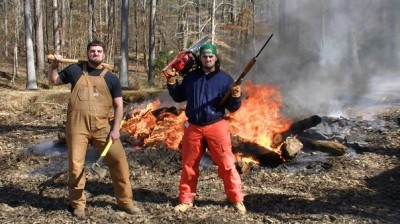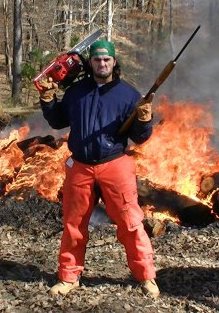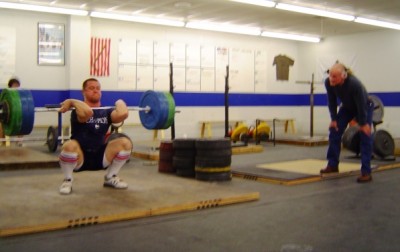So it goes.
We like to encourage the readers of this website to compete in something. It’s a safe way to take risks, it allows you to challenge yourself, it focuses your training (and makes it more fun), and it lets you learn about yourself. Since we want you to be strong, the initial competitive endeavors are the barbell sports; powerlifting and weightlifting.
Most of the people here gravitate towards powerlifting since that closely resembles their training: squats, presses, and deadlifts. Olympic weightlifting seems to be less popular. The biggest reason probably is that the lifts look difficult to learn and execute, especially without a coach.
Yes, the shit is hard to do without a coach. For some people, they will never be decently good because they are goofy athletes. But if you were athletic growing up, and you like lifting weights, then why not take a stab at Olympic weightlifting?
If you take a chance on weightlifting, then you should initially learn the movements from a decent coach. I suggest this because the ability to properly teach yourself complex movements is rare, and you don’t want to teach yourself a bunch of bad habits — they are harder for a coach to break than for the coach to teach you properly to begin with.
Finding a “decent coach” may be a task. Some of you will be limited to what is available to you locally or to your own resources to find a coach. My experience would suggest that you find a coach who takes mechanics into consideration. Rippetoe has taught me how to do the lifts and coach them (as he has with many people), and the way that he coaches lifting is derived from a mechanical analysis of the body’s anatomy. I have been coached briefly by Tommy Suggs, and he thinks in terms of efficiency (bar path being vertical, no wasted energy as a result of a non-vertical bar path, etc.). Here is a video of weightlifting legend Tommy Kono explaining how he teaches the snatch. I particularly found it interesting how he wanted the shoulders in front of the bar in the set-up position, which is contrary to what most coaches teach nowadays:
I like how Kono makes an attempt at validating some of the things he is teaching, even if one or two points are contradictory to what I have learned to teach. Having a reason based on analysis, even if it is faulty analysis, is better than teaching it because “that is how it has always been done”. I consider this particularly important; if it were me, I would use this as one of my qualifying factors in choosing a coach…assuming the luxury of choosing a coach was present.
Then there is all of the obvious shit you should look for in a coach; how you get along with them, what is their coaching style, what kind of experience do they have (higher level lifters or novices — some coaches are not very good at teaching a beginner), how patient they are, etc. I could write quite a bit on coaching and all of the considerations that go into doing it and receiving it, but it leaves the scope of this post — you’ll just have to learn what kind of approach works best for you.
This is, of course, more of an extensive list for the OCD-type person that takes all of this stuff into consideration. The majority of you just need to get your ass on a platform and learn the lifts from somebody. Get a working knowledge of how they work, what your body is supposed to be doing, and then you can start gaining the experience to make adjustments.
In the next few parts of this “Getting Into Weightlifting” series, I will talk about how you and your coach will program, what to expect in your learning process, and suggestions on how to proceed after that initial learning stage. If there are any of you who are experienced in this sport, feel free to add to what I have started in the comments section. More information from multiple sources will help prepare the beginner and experienced lifters alike.
People always like training montages — here is the Polish national team (get past the non-english intro and you will see some lifting):



